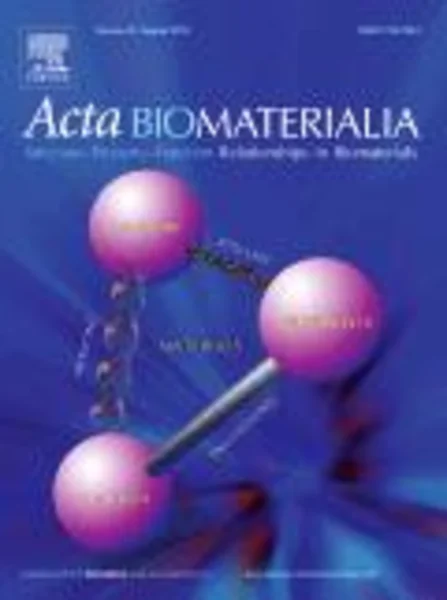-
an n-halamine-based rechargeable antimicrobial and biofilm controlling polyurethane
جزئیات بیشتر مقاله- تاریخ ارائه: 1392/01/01
- تاریخ انتشار در تی پی بین: 1392/01/01
- تعداد بازدید: 760
- تعداد پرسش و پاسخ ها: 0
- شماره تماس دبیرخانه رویداد: -
an n-halamine precursor, 5,5-dimethylhydantoin (dmh), was covalently linked to the surface of polyurethane (pu) with 1,6-hexamethylene diisocyanate (hdi) as the coupling agent. the reaction pathways were investigated using propyl isocyanate (pi) as a model compound. the results suggested that the imide and amide groups of dmh have very similar reactivities toward the isocyanate groups on pu surfaces activated with hdi. after bleach treatment the covalently bound dmh moieties were transformed into n-halamines. the new n-halamine-based pu provided potent antimicrobial effects againststaphylococcus aureus (gram-positive bacterium), escherichia coli (gram-negative bacterium), methicillin-resistant staphylococcus aureus (mrsa, drug-resistant gram-positive bacterium), vancomycin-resistant enterococcus faecium (vre, drug-resistant gram-positive bacterium), and candida albicans (fungus), and successfully prevented bacterial and fungal biofilm formation. the antimicrobial and biofilm controlling effects were stable for longer than 6 months under normal storage in open air. furthermore, if the functions were lost due to prolonged use they could be recharged by another chlorination treatment. the recharging could be repeated as needed to achieve long-term protection against microbial contamination and biofilm formation.
مقالات جدیدترین رویدادها
-
استفاده از تحلیل اهمیت-عملکرد در ارائه الگوی مدیریت خلاقیت سازمانی و ارائه راهکار جهت بهبود
-
بررسی تاثیر ارزش وجوه نقد مازاد بر ساختار سرمایه شرکت های پذیرفته شده در بورس اوراق بهادار تهران
-
بررسی تأثیر سطح افشای ریسک بر قرارداد بدهی شرکت های پذیرفته شده در بورس اوراق بهادار تهران
-
بررسی تأثیر رتبه بندی اعتباری مبتنی بر مدل امتیاز بازار نوظهور بر نقد شوندگی سهام با تأکید بر خصوصی سازی شرکت ها
-
تأثیر آمیخته بازاریابی پوشاک ایرانی بر تصویر ذهنی مشتری پوشاک ایرانی (هاکوپیان)
-
شناسایی، اولویت بندی و مقایسه ی عوامل انگیزاننده و بازدارنده مشارکت در فعالیت های ورزشی در بین دانش آموزان مقطع متوسطه اول شهرهای بروجن و لردگان
-
ارتباط میزان پروتئین c واکنشی و گلبول سفیدخون پلاسما و شدت سکته مغزی ایسکمیک و حجم انفارکت
-
تغییرات سطح سرمی کورتیزول و شمارش سلول های خونی پس از مواجهه کوتاه مدت با پودر رادیواکتیو توری های فانوس در موش های صحرایی نر
-
seeable universe and its accelerated expansion: an observational test
-
simulating the visco- elasto plastic behavior of glasphalt mixtures by using of modified burgers model
مقالات جدیدترین ژورنال ها
-
مدیریت و بررسی افسردگی دانش آموزان دختر مقطع متوسطه دوم در دروان کرونا در شهرستان دزفول
-
مدیریت و بررسی خرد سیاسی در اندیشه ی فردوسی در ادب ایران
-
واکاوی و مدیریت توصیفی قلمدان(جاکلیدی)ضریح در موزه آستان قدس رضوی
-
بررسی تاثیر خلاقیت، دانش و انگیزه کارکنان بر پیشنهادات نوآورانه کارکنان ( مورد مطالعه: هتل های 3 و 4 ستاره استان کرمان)
-
بررسی تاثیر کیفیت سیستم های اطلاعاتی بر تصمیم گیری موفق در شرکتهای تولیدی استان اصفهان (مورد مطالعه: مدیران شرکتهای تولیدی استان اصفهان)
-
نقش قابلیت های مدیریت ریسک در رابطه میان نوآوری در زنجیره تأمین و کسب مزیت رقابتی (مورد مطالعه:شرکت های مستقر در شهرک صنعتی رشت)
-
دستگاه اختلال بین فرستنده و گیرنده در برابر بمب های رادیو کنترلی دست ساز
-
گفتمان سیاست تسامح صفر در نظام کیفری ایران؛ بسترها و زمینه ها
-
بکار بردن شش روش مقاوم سازی در افزایش سطح عملکرد لرزه ای ساختمان پنج طبقه قاب خمشی بتنی
-
an investigating the impact of quantitative trading strategies on the stock market crash according to the behavioral finance perspective (case study: companies listed on the tehran stock exchange)




سوال خود را در مورد این مقاله مطرح نمایید :